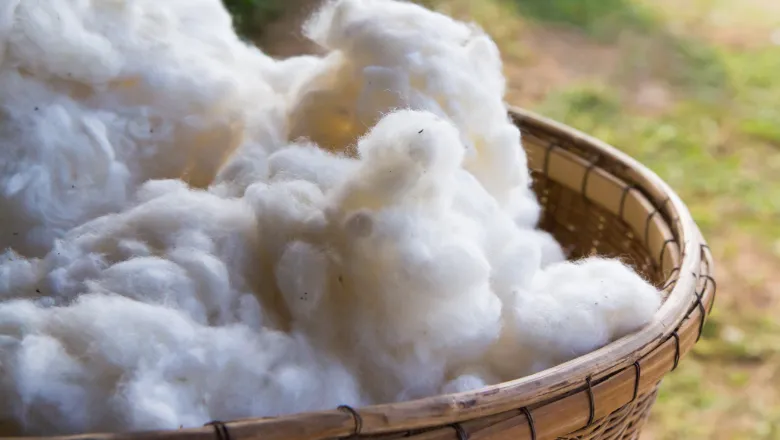How can we be sure that environmental natural fibre levels are not as harmful as, or more harmful than, synthetic fibre levels? Simply: we cannot, at least for the moment.”
Dr Matteo Gallidabino, Lecturer in Forensic Chemistry, King’s Forensics
29 August 2024
King's scientist makes plea for greater focus on natural textile fibres
A scientist at King’s has contributed to a letter urging environmental scholars to give greater focus to the environmental impacts and sustainability issues associated with natural textile fibres.

A King’s researcher has urged environmental scholars to give greater focus to the environmental sustainability issues associated with natural textile fibres used in fashion, highlighting key areas to address.
Natural fibres, such as cotton and wool, are derived directly from an animal or plant. Despite a general sense that they are more environmentally friendly than synthetic fibres due to their natural origins, studies have found they are extremely prevalent and represent more than 70% of all fibres found in the environment. This highlights, on one hand, that natural fibres may be less biodegradable than expected and, on the other hand, that they may significantly impact the health of ecosystems.
Writing to Environmental Science & Technology, academics including Dr Matteo Gallidabino, Lecturer in Forensic Chemistry, King’s Forensics, call for changes to the way research is conducted into fibre and textile pollution.
Dr Matteo Gallidabino said: "Despite the fact that synthetic fibres have developed enormously in recent years and, to date, approximately represent two thirds of all fibres used in the textile sector, natural fibres are still abundant in environmental samples where they typically account for the majority of the fibres recovered. The problem is that we still know very little about their environmental impact, included their toxicity. This shows a clear misalignment between the current research in microfibres and textile pollution, which mainly focuses on plastic materials, and the actual prevalence of the problem.
The authors criticise the ‘half told story’ of the environmental footprint of natural fibres built on unqualified assumptions that they are inherently more sustainable. While natural polymers are more biodegradable than synthetic polymers, modifications to natural fibres for textile applications can alter their chemical structure. This can result in a slower rate of biodegradation or run the risk of chemicals leeching into the environment. Therefore, they ask that potential risks associated with the persistence, toxicity, and chemical load of natural fibres is explored at scale.
The authors also highlighted that assessing the sustainability of natural fibres will require interdisciplinary academics collaborations, as well as integration of expertise from outside environmental science. It is important that this interdisciplinary research encompasses the field of forensic science and forensic fibre specialists, who have optimised methods for the comprehensive characterisation of single microfibres in complex situations.
The scientific community will also need to work on standardising terminology. While categories exist for the different fibre types – namely, natural, synthetic and regenerated fibres – these definitions are not consistent within research literature. The authors argue that environmental scholars need to consistently use industry-standard definitions to make knowledge exchange easier and more transparent.
Nine years since a letter to the same journal asked if natural fibres represent a missing link in our understanding of textile fibre pollution, we argue that they continue to represent a missing thread in sustainable fashion debates - a thread that requires concerted interdisciplinary research approaches. Exclusion of natural fibres in fibre pollution research risks promoting misinformed sustainability policies and messages. We implore the scholarly community to continue to develop and diversify natural fibre research.”
Dr Tom Stanton, Lecturer in Geography, Loughborough University (first author)
The letter was created by scientists contributing to the IMPACT+ project – a major collaborative project seeking to examine how the environmental effects of the fashion industry are measured.

